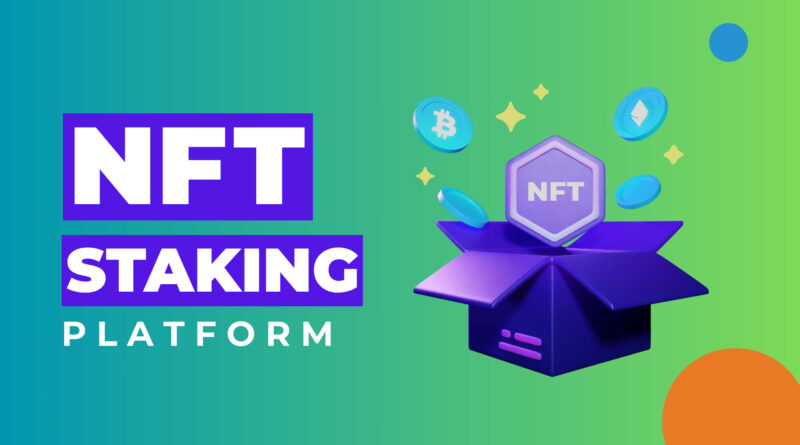What are the Steps to Developing an NFT Staking Platform?
In recent years, Non-Fungible Tokens (NFTs) have gained significant popularity in the digital asset space, offering unique ownership rights and opportunities for creators and collectors alike. Alongside NFTs, the concept of staking has emerged as a means of earning rewards by participating in various blockchain networks. Combining these two concepts, the development of NFT staking platforms has become an exciting endeavor for blockchain developers and entrepreneurs. In this comprehensive guide, we will explore the steps involved in developing an NFT staking platform.
Introduction to NFT Staking Platforms:
Before delving into the development process, it’s essential to understand the fundamentals of NFT staking platforms. NFT staking platforms enable users to stake their NFTs, thereby contributing to the security and functionality of a blockchain network. In return for staking their NFTs, users receive rewards in the form of additional NFTs, tokens, or other incentives. These platforms play a crucial role in decentralizing blockchain networks while incentivizing participation and engagement among users.
Step 1: Conceptualization and Research:
The first step in developing an NFT staking platform is conceptualization and thorough research. This involves defining the purpose and goals of the platform, identifying target users, and conducting market research to understand the competitive landscape. Key considerations include determining the type of blockchain network (e.g., Ethereum, Binance Smart Chain) to build on, assessing regulatory requirements, and identifying potential partners or collaborators.
Step 2: Designing the Architecture:
Once the concept is defined, the next step is to design the architecture of the NFT staking platform. This involves outlining the platform’s features, functionalities, and user interface (UI) design. Important features to consider include staking pools, reward distribution mechanisms, NFT marketplace integration, user authentication, and security protocols. Collaborating with designers and UX/UI experts can help create an intuitive and engaging platform that meets the needs of users.
Step 3: Smart Contract Development:
Smart contracts form the backbone of NFT staking platforms, facilitating various functionalities such as staking, unstaking, reward distribution, and governance. The development of smart contracts requires expertise in programming languages such as Solidity (for Ethereum-based platforms) or similar languages compatible with other blockchain networks. Smart contracts should be thoroughly tested for security vulnerabilities and audited by third-party firms to ensure reliability and trustworthiness.
Step 4: Frontend and Backend Development:
With the smart contracts in place, the development focus shifts to building the frontend and backend of the NFT staking platform. Frontend development involves creating the user interface (UI) and user experience (UX) design using technologies such as HTML, CSS, and JavaScript frameworks like React or Vue.js. Backend development involves setting up servers, databases, and APIs to handle user interactions, data storage, and integration with blockchain networks.
Step 5: Integration and Testing:
Once the frontend and backend components are developed, integration with the blockchain network and third-party services is essential. This includes integrating the platform with the chosen blockchain network for staking, NFT minting, and transaction processing. Additionally, integrating external services such as payment gateways, analytics tools, and security solutions may be necessary. Rigorous testing is conducted at each stage of development to identify and fix any bugs or issues before launch.
Step 6: Deployment and Launch:
After thorough testing and refinement, the NFT staking platform is ready for deployment and launch. Deployment involves deploying smart contracts to the blockchain network and configuring servers for hosting the frontend and backend components. A well-planned launch strategy, including marketing, promotion, and user acquisition efforts, is crucial for attracting users and generating initial traction. Post-launch monitoring and support are essential for addressing any issues and ensuring a smooth user experience.
Step 7: Community Building and Growth:
Community building and growth are ongoing processes that are integral to the success of an NFT staking platform. This involves engaging with users, soliciting feedback, and continuously iterating on the platform to enhance its features and functionalities. Building a vibrant and active community around the platform can help drive adoption, attract new users, and foster long-term sustainability.
Conclusion:
Developing an NFT staking platform requires careful planning, technical expertise, and a thorough understanding of blockchain technology and decentralized finance (DeFi) principles. By following the steps outlined in this guide, developers and entrepreneurs can embark on the journey of creating innovative and rewarding NFT staking platforms that empower users to participate in the digital economy and unlock new opportunities in the burgeoning world of blockchain technology.

